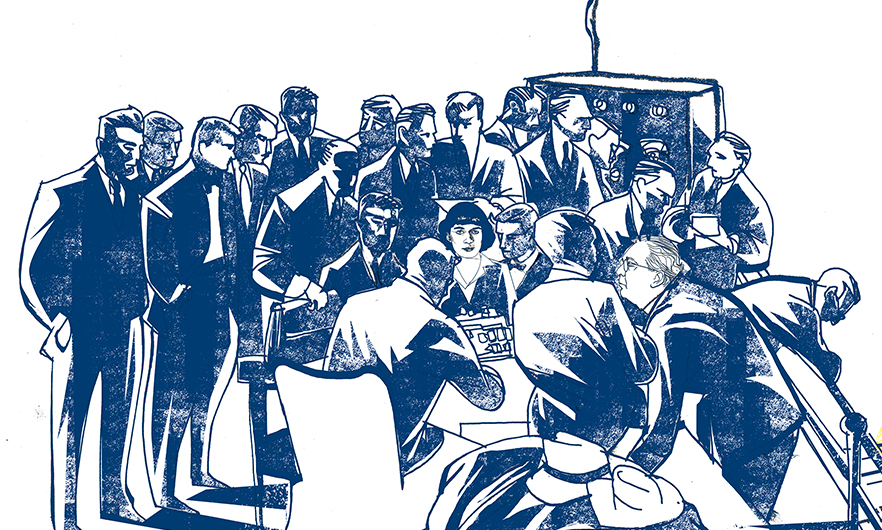
Illustration by John Jay Cabuay
The scientists who made CP-1 possible, and the thinkers tending its ambivalent legacy today.
This article is part of the special feature “Core Stories,” which commemorates the 75th anniversary of the first controlled, self-sustaining nuclear chain reaction.
Leo Szilard
The idea man
Leo Szilard, the physicist who conceived the possibility of a nuclear chain reaction and the humanist who fought to control its destructive power, had eccentric, sometimes contradictory, habits. Arriving one night in Washington, DC, he called fellow expat Hungarian Edward Teller to ask for a ride from the train station. Teller’s wife, Mitzi, insisted he stay in their home. In their guest room Szilard bounced on the bed and said he remembered from a previous visit that the mattress was too hard, so he hied himself off to a hotel.
Another time, he invited himself for an overnight stay with the British physicist Jim Tuck and his wife, Elsie. When the couple forgot to put a mattress on their guest’s bed, Szilard slept on the box spring and pronounced himself well rested in the morning.
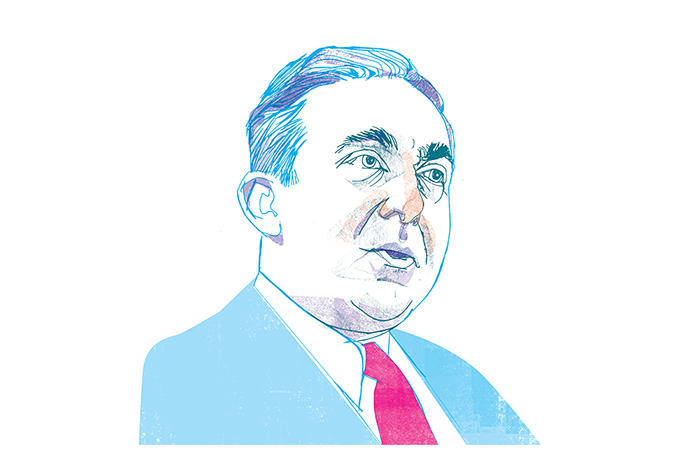
“Leo was a man of surprises,” concluded Leona Woods Marshall Libby, SB’38, PhD’43, who recalled these stories in her memoir The Uranium People (Crane, Russak, and Company, 1979).
Szilard lived much of his life out of hotel rooms or friends’ spare bedrooms, and the surprises he left behind included suitcases full of books and papers labeled with his name. “Like a cow bird, which lays its eggs in nests of other birds,” Libby wrote, he would flit from place to place encumbered with little more than his thoughts.
Few people in history have had thoughts so consequential. They came to him during long baths or leisurely walks around Berlin and London and, later, New York and Chicago.
After serving in the Austro-Hungarian army in World War I, Szilard left his native country for Germany in 1919. At the University of Berlin he impressed professor Albert Einstein with a mathematical proof that solved a stubborn problem in thermodynamics. Szilard’s paper on the subject was accepted as his PhD thesis after just one year of undergraduate physics.
In 1933, walking in London, where he had fled after Hitler’s ascent to power, he was struck with the idea for a nuclear chain reaction—something he’d meditated on since hearing that no less an authority than Ernest Rutherford, known as the father of nuclear physics, considered such a thing “moonshine.” Szilard did not suffer from doubt or dwell on conventional wisdom.
Collaborating with Einstein, he helped push the United States toward a program to develop atomic power more than two years before the country entered World War II. An August 2, 1939, letter to President Franklin D. Roosevelt that Szilard drafted with Einstein and sent with Einstein’s signature described the state of the art in nuclear physics and warned that Germany might be pursuing an atomic bomb.
That letter inspired what became the Manhattan Project, to which Szilard was a key contributor and, at times, a perceived antagonist. He believed scientists, not military officers, should control the decision making. General Leslie Groves, the project’s military leader, took Szilard’s resistance to his authority as disloyalty. Suspecting he might be a spy, Groves put Szilard under government surveillance.
Once an atomic bomb had been developed, the man who conceived its scientific feasibility lobbied against its military use. On July 17, 1945, unaware of the successful Trinity test the day before, Szilard wrote a petition to new president Harry S. Truman urging him not to deploy the bomb against Japan. “A nation which sets the precedent of using these newly liberated forces of nature for purposes of destruction,” he wrote, “may have to bear the responsibility of opening the door to an era of devastation on an unimaginable scale.” The petition, signed by about 70 scientists, never reached Truman.
When the bomb fell on Hiroshima, Szilard wrote a note on Quad Club stationery to Gertrud Weiss, the physician and professor of medicine he would marry in 1951, calling it “one of the greatest blunders of history.”
After the war he advocated for arms control and his itinerant intellectual interests drifted toward biology. He became a professor of biophysics at UChicago and eventually helped establish the Salk Institute for Biological Studies in La Jolla, California. The developer of the first polio vaccine, Jonas Salk, called Szilard an “artist of science.” The men’s shared desire to create a place “for evolvers rather than maintainers of the status quo,” as Salk put it, led to a deep scientific kinship.
Being an evolver—and so unconventional in his way of life that Robert Maynard Hutchins, learning of Szilard’s marriage, said his wife must have done it for the tax benefit—may have overshadowed Szilard’s scientific contributions. Aware as his contemporaries were of his quirks, they also respected how he exercised his influential intellect.
As Nobel Prize–winning biochemist Jacques Monod put it: “He knew that meaningful ideas are more important than any ego, and he lived according to these ethics.”—Jason Kelly
Leona Woods Marshall Libby
The pathbreaker
They were changing out of lab coats blackened with graphite dust into heavy jackets for a subzero Chicago night when Eugene Wigner arrived with a bottle of wine and paper cups.
The scientists of the Manhattan Project’s Metallurgical Laboratory had just produced a triumph of pure science, but one with tragic, even apocalyptic, potential. About 20 people remained in the abandoned squash courts under the west stands of Stagg Field on the monumental afternoon of December 2, 1942. One was Leona Woods Marshall Libby, SB’38, PhD’43, a 23-year-old student of Enrico Fermi’s, one of the youngest scientists to work on the experiment.
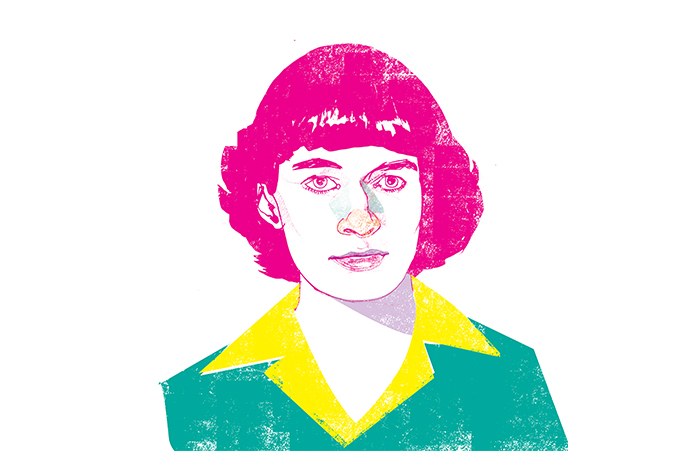
Whether theirs was the world’s first chain reaction, the researchers did not know. If Germany had beaten the United States to the breakthrough, as they feared, the Allies could be fatally far behind in the secret World War II race to build an atomic bomb.
So the celebration in the Met Lab was not just muted but mute. Sipping the drops rationed from the single bottle of chianti, nobody mustered so much as a “cheers.”
“There was a greater drama in the silence than if words had been spoken,” Libby wrote in The Uranium People. “Everyone was thinking—if we did it, haven’t the Germans already achieved the chain reaction?” Libby had completed her course work toward her PhD only months before under Robert Mulliken, and her expertise in vacuum technology had made her a member of the team.
Her knowledge was necessary to construct the boron trifluoride detectors (“one of my better creations,” she called them) that measured neutrons in the reactor known as CP-1. Libby, who had earned an undergraduate degree at 18, was ahead of her time, the only woman scientist on Fermi’s team in a world where the highest compliment was to be regarded worthy of a man’s work. Fermi’s wife, Laura, recalled her as “a tall young girl built like an athlete, who could do a man’s job and do it well.” Not that she was allowed to do all such jobs.
Although physicist Walter Zinn refused to let her participate in building the pile itself—arguing that the necessary dust masks would disguise her face and he might direct his salty epithets at a girl—Libby had plenty to occupy her: “Preparing the counters, learning the nuclear physics that had already been developed, and trying to understand the steady stream of theoretical papers issuing from Wigner’s group.”
She worked in Eckhart Hall on her own graphite pile, measuring the sensitivity of boron trifluoride to neutrons emerging from the pile at different temperatures to develop her detectors. On December 2 they clicked more and more quickly as the cadmium control rod was drawn out of the pile in stages, growing to a roar as the reaction approached criticality.
Afterward, Libby continued her measurements of boron trifluoride’s neutron absorption and the effect of graphite’s thickness on neutron energy, working when the pile wasn’t in use by other scientists, from 7 p.m. until early morning. As a graduate student, she had keys to several campus physics and chemistry labs, the better to scrounge equipment in the dark emptiness of night. Vacuum grease, pumps, stove wire, stopcocks. The recently established Met Lab had little of its own, forcing Libby into a creative cobbling of components to make her measurements.
In 1943 Libby married fellow Met Lab physicist John Marshall and soon became pregnant, a condition that her baggy work overalls and equipment-filled pockets helped conceal. She told only Fermi she was expecting. By then the experiment, now known as CP-2, had moved to the forest preserve west of Chicago, far enough away that Fermi asked his wife for instructions on delivering a baby, just in case.
“When he told me he was ready,” Libby writes, “it stiffened my resolution that under no circumstances would he get the chance to practice midwifery, which, in retrospect, was no doubt a disappointment to him.”
She delivered son Peter at the University’s Lying-In Hospital and was back to work near the thermal column atop CP-2 within a week. To the Manhattan Project scientists, little else in the world felt as important at that moment.
Libby had a brother and brother-in-law fighting in the Pacific. She believed they wouldn’t have survived an Allied invasion of Japan that the August 1945 dropping of the atomic bombs precluded. Interviewed in 1986, the year she died from a stroke at age 67, she expressed only pride, no pangs of conscience for the consequences of the Manhattan Project’s achievement. She noted the misgivings of many who thought the second bomb, which fell on Nagasaki days after the devastation visited upon Hiroshima, unnecessary. Those critics are “the guys who cry on shoulders,” Libby said. “When you are in a war, to the death, I don’t think you stand around and ask, ‘Is it right?’”—Jason Kelly
James Franck
The conscience
James Franck didn’t have to leave Germany. Because he had fought for the country in World War I, Franck was—for the time—exempt from civil service laws enacted in 1933 that forced Jews from government work.
A 1925 Nobel Prize recipient, he could have remained at the University of Göttingen, where he was a professor and institute director, but his conscience compelled him to resign. Years later Franck said the most persuasisve argument in favor of his self-imposed exile came from Danish physicist Niels Bohr.
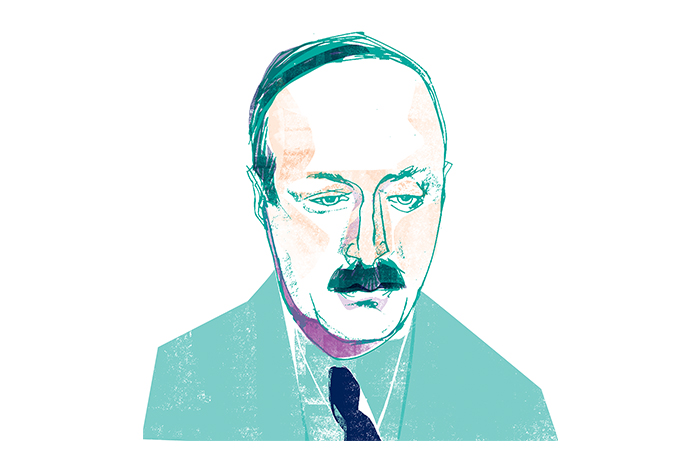
“Bohr insisted that individuals really were responsible for the political actions of their societies,” historian Richard Rhodes writes in The Making of the Atomic Bomb, and Franck refused to show even tacit acquiescence to the anti-Semitic sentiment on the rise in Hitler’s government.
So in 1933 he left for Bohr’s Institute of Theoretical Physics at the University of Copenhagen, then on to the United States, first at Johns Hopkins University before arriving in 1938 at the University of Chicago, where the interdisciplinary James Franck Institute is named for him. At UChicago, his political courage continued to shape his professional life. Franck became synonymous with the effort among scientists to convince the US government to resist using a nuclear bomb in a surprise attack on the citizens of Japan.
As chair of a panel of Metallurgical Laboratory scientists tasked with evaluating the social and political implications of atomic power, Franck drafted a memorandum, signed by Szilard and five other scientists, that would come to bear his name. The Franck Report, delivered to secretary of war Henry Stimson’s office in June 1945, argued that unleashing such force without warning would have far-reaching negative implications even beyond its “indiscriminate destruction upon mankind.” The consequences would include a reduced chance for an international agreement restricting the use of nuclear weapons, the report cautioned, and an arms race would ensue.
The signatories to the report called for the military to demonstrate the power of the bomb with a test in an uninhabited area. Choosing that course, they reasoned, would alert the Japanese people (perhaps warning enough to inspire surrender) or at least allow the United States to assess world opinion before causing such destruction. “In this way,” the report read, “other nations may assume a share of responsibility for such a fateful decision.”
With victory in Europe secure, Franck considered the bomb’s use unnecessary to defeat Japan, or even to significantly shorten war in the Pacific. Arthur Compton, who oversaw the Met Lab, disagreed, arguing in the cover letter to Stimson that accompanied The Franck Report that the report did not place enough importance on lives that would be saved if the bomb hastened the end of the war.
The report, of course, did not persuade President Truman and may never have reached him. There was no test, no warning, only sudden death and widespread destruction delivered from the sky over Hiroshima and, days later, Nagasaki in August 1945.
Although the report did not prevent use of the bomb, Franck’s efforts made him a symbol of the ideal that scientific discoveries should be used only for constructive ends. His Nobel Prize biography states that The Franck Report, “although failing to attain its main objective, still stands as a monument to the rejection by scientists of the use of science in works of destruction.”
For Franck, those principles extended beyond science. He refused to return home after the war, turning down an offer to become chair in experimental physics at Heidelberg because he could not work with those who “watched the [Nazi] crimes with indifference.” At the same time, he could not close his eyes to the country’s suffering citizens, and advocated for US aid to help his native country rebuild.—Jason Kelly
John A. Simpson Jr.
The responsible scientist
In December 1945, John Simpson stood before the US Senate to testify on the need for civilian control of nuclear energy. Formerly a scientific group leader on the Manhattan Project, Simpson was emerging as a moral leader in the effort to educate lawmakers and the public on the nuclear age that he had helped usher in.
In the months since the United States had dropped atomic bombs on Hiroshima and Nagasaki, Simpson had been appointed the first chair of nuclear watchdog the Atomic Scientists of Chicago, coauthored an article in Life that gave many Americans their first sober assessment of the dawning nucleonic era, and stalled his budding scientific career to lobby Washington for the peaceful use of the new technology. He was 29 years old.
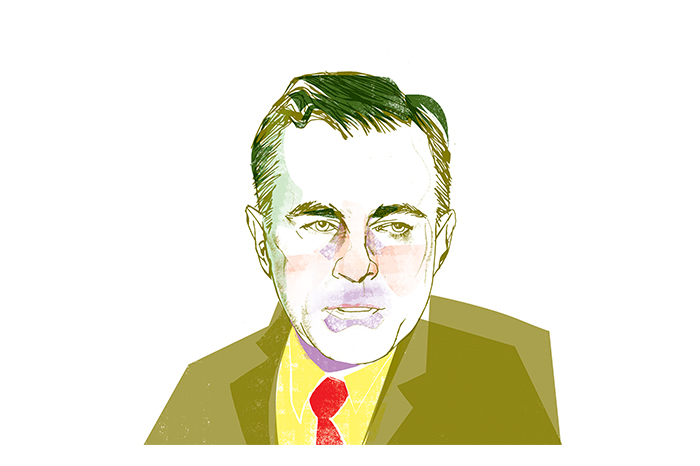
Like his fellow scientists at the University of Chicago’s Metallurgical Laboratory, Simpson had spent 1944–45 racked by a profound twofold anxiety: first, about the need to outpace the Nazis in developing an atomic bomb and second, about the possibility that the United States might actually use the bomb if their efforts proved successful. The surrender of Germany in the spring saw the first fear eclipsed by the second.
Simpson was by this time helping organize a series of private seminars for Met Lab scientists to discuss the consequences of their work—creatively disguised as innocuous office meetings after the idea met with Army disapproval. He also joined 66 other scientists in signing Szilard’s petition, which followed on the failure of The Franck Report and also urged President Truman to encourage Japan to surrender by demonstrating the bomb in an unpopulated area. To use the bomb in an act of war, Simpson believed, would precipitate an arms race with only one logical outcome.
When the scientists’ strategy on Japan did not carry the day, Simpson led the Atomic Scientists of Chicago—as part of the emerging Federation of Atomic Scientists (later rebranded the Federation of American Scientists)—in an energetic campaign to educate lawmakers and the public on their area of collective expertise. Their key victory, winning the civilian control of nuclear energy and weapons in 1946, owed in no small part to Simpson’s role as unofficial adviser to democratic senator Brien McMahon of Connecticut, chair of the Senate Special Committee on Atomic Energy. This is what brought the young Simpson to Washington at the end of a long year in the lab.
Simpson displayed the same effectiveness and political savvy in his work as a scientist. In addition to heading the executive committee of the Bulletin of the Atomic Scientists, he did pioneering work on cosmic rays, cofounded the University’s space research program, and sent his instruments on numerous missions throughout the solar system.
One noteworthy mission placed Simpson’s cosmic dust detectors on two Soviet spacecraft headed for Halley’s Comet in 1986. Simpson deftly brokered a series of arrangements with NASA, the Reagan administration, the University of Chicago, the Russians, and the German Max Planck Institutes as an intermediary to enable scientific collaboration between two countries that could not officially work together. The specter that had haunted Simpson since the Manhattan Project—nuclear brinksmanship—did not defeat the spirit of camaraderie that comes naturally to scientists working on a problem of mutual interest.
Simpson once spoke of the “necessary irresponsibility” of the scientist: the freedom to investigate nature objectively, without regard to convention or politics. Such freedom complements rather than contradicts the responsibility that Simpson believed scientists should take for the consequences of their work. For him, the scientist was by turns neutral investigator and moral pathfinder.
Until his death in 2000, Simpson projected this ethos of responsible freedom like few others. In the words of Edward W. “Rocky” Kolb, dean of the Division of the Physical Sciences, “He accomplished a great deal, and he never lost his voice.”—Lucas McGranahan
Chin-Tu Chen
The radiologist
Growing up in Taiwan, Chin-Tu Chen, PhD’86, wanted to study nuclear physics. His heroes were the Chinese scientists Chen-Ning Yang, PhD’48, and Tsung-Dao Lee, PhD’50, who both worked with Enrico Fermi as students and who shared a Nobel Prize in 1957 for their research on radioactive decay in subatomic particles. Theirs was technical, disciplinary work.
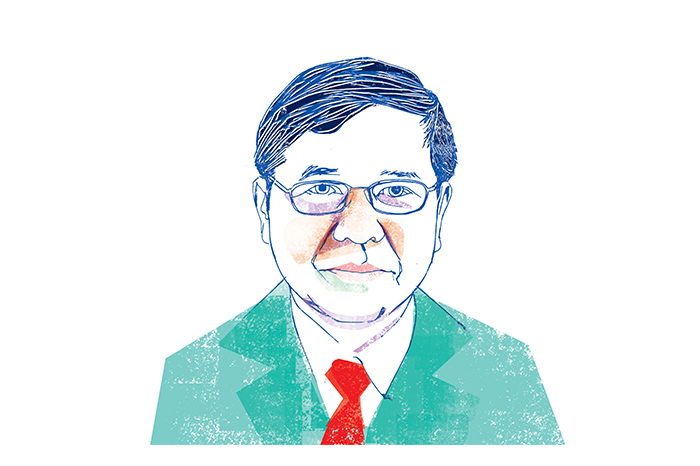
Chen followed suit, enrolling in a physics doctorate program at Northwestern. He spent long days and nights at Argonne National Laboratory, cooped up near the accelerator machine, bombarding targets, trying to make calculations of the nucleus model. Repetition and abstraction took their toll.
“After a while, I started to think, ‘this is really very remote from your daily life,’” he remembers now. The prospect of moving home to join the Taiwanese academy, which he’d considered, lost its appeal. The wider his reach, the more satisfied he’d be.
Robert Beck, AB’54, SB’55, gave Chen the push he needed. Beck, a UChicago radiology professor and a pioneer of modern nuclear medicine, had gotten his start at the Argonne Cancer Research Hospital, which the US Atomic Energy Commission had established as part of its Atoms for Peace program to identify socially beneficial uses for ionizing radiation.
In 1960 Beck authored a major theoretical study speculating that gamma rays, specifically those produced by the radioisotope technetium 99m, could be used to scan the brain for abnormalities. Today it’s used tens of millions of times a year worldwide. He’d go on to design scanning devices for radionuclide imaging, helping doctors and diagnosticians see areas inside the body that are inaccessible with standard X-rays.
In the early 1980s, when Chen was waffling, second-guessing his career path, he sought out Beck, who offered the young scholar a summer job and then a slot in UChicago’s medical physics program. “You can do some good to others and eventually do [some good] to yourself too,” Chen remembers Beck telling him. “It connects physics with life, basically.”
Chen’s office today is nestled deep inside the University’s medical center. The setting is decidedly more busy hospital corridor than sterile science lab, which Chen relishes. A faculty member and researcher in radiology and medical physics for over three decades, he’s published more than 300 scientific papers and secured six patents related to molecular imaging, which noninvasively generates detailed pictures of the body representing life and life processes at the molecular level.
Molecular imaging technology has grown far more sophisticated since Chen started. In 1981, with Beck, he helped build one of the Midwest’s first positron emission tomography (PET) scanners, which wouldn’t become standard in clinical practices until around 2000, the same time that magnetic resonance imaging (MRI) was gaining currency. These days Chen and his colleagues develop and deploy radioisotopes for diagnostic imaging—of neurological diseases or cancer, for instance—and for image-guided radiation therapy to treat diseased organs or to shrink or eliminate tumors in a highly targeted way. The group is also a leader in multimodality imaging, combining the superior detail of MRI images, say, with the ability of PET scans to reveal cellular-level metabolic changes—how tissue or organs are functioning.
For the past year Chen’s department has begun to operate a state-of-the-art cyclotron, a particle accelerator that produces medically usable radioisotopes, an $8.4 million investment that Chen had lobbied for since the University’s original particle accelerator was decommissioned in 1997. “You use probes to assess biology and biochemistry,” he says. “Everybody is going in that direction.”
Chen is constantly rewarded by the collaborative nature of his chosen profession. He can take a five-minute walk and sit right beside the physicians reviewing the images his lab produces. His group tries to push their work into clinical practice as much as possible. “I really think this is the best work you can do from the physics perspective,” he says. “You apply the fundamental science to saving lives.”—Adam Doster
Norma Field
The activist
As a child in Tokyo, born in the wake of World War II, Norma Field became aware of the nuclear threat early. The professor emeritus of East Asian languages and civilizations remembers feeling “the terrifying force of the images” from Hiroshima and Nagaskai, and being particularly haunted by the iconic photo of a Hiroshima man’s silhouette imprinted like a shadow on a granite stair by the heat of the blast.
Around the breakfast table, over the morning headlines, Field’s parents regularly debated the merits of atmospheric testing, her anticommunist American father arguing the pro side against her pacifist Japanese mother. Her mother’s views “had so much more credibility for me” and, reinforced by the photo, created a sense of urgency to do something to help prevent another devastating war between the two countries. What she could think of, as a child, was to teach about Japan in the United States.
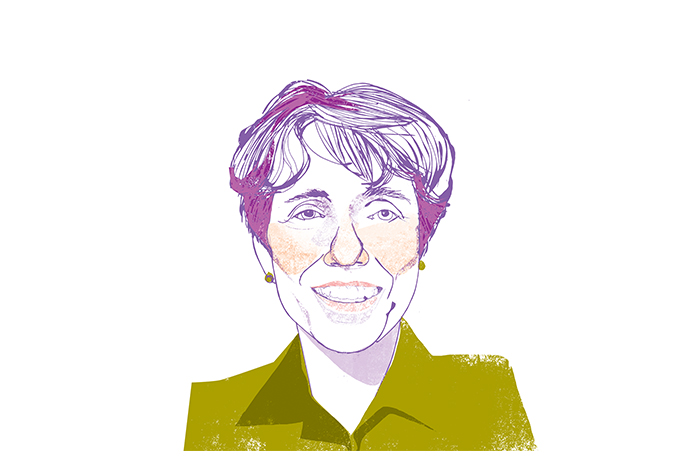
For much of the decade before she retired in 2012, Field focused on Japanese proletarian literature, a prewar artistic movement by and for the working class. That research interest resulted in her coedited book For Dignity, Justice, and Revolution: An Anthology of Japanese Proletarian Literature (University of Chicago Press, 2016).
And it brought a class consciousness to her lifelong concerns about nuclear technology’s effects on human beings and human bodies—and not only through nuclear warfare. She began to think about the inequitable burdens of nuclear experimentation and fallout. Those burdens can be not only biological but economic and social: “Who is able to do what? Who is able to get away from disasters?” Survivors of Hirsohima and Nagasaki worried about being discriminated against in hiring and marriage, and the same concerns plague Fukushima residents today.
The 2011 meltdown of Japan’s Fukushima Daiichi Nuclear Power Plant has become a focusing event for Field. “I think it combined almost everything I was ever interested in.” It made her want to capture in her writing “the kinds of anguish a nuclear disaster brings,” she says. “I want to share that, I want people to read that and think twice about it.” She had already been challenging the distinction between nuclear weapons as existentially dangerous and nuclear power as safe and clean, including in a UChicago course that she started teaching in 2004, Hiroshima, Nagasaki, and Beyond.
Field regularly asked students in the course to collaborate on archival projects about the CP-1 scientists, work that highlighted for Field a decline in awareness of nuclear risks in the ensuing decades, perhaps now mitigated by tensions with North Korea. “There was a lot of mindfulness among the early atomic scientists here and around the country about the immeasurable potential harm of this technology, which has really faded,” she says.
Public education hasn’t moved past teaching that “there was Pearl Harbor, then Hiroshima—or, it ended the war earlier so it was a humanitarian act.” And few are aware how US citizens themselves have been exposed to radiation, whether by working in nuclear facilities, living near plants as “downwinders,” or as experimental subjects at research institutions.
Following her retirement, Field has continued to slowly and comprehensively research the political issues surrounding Fukushima. She flies to Japan as often as she can manage, interviewing people and getting a sense of how they cope with the possible consequences of exposure.
In Chicago she lectures, hosts symposia, and shares information through Atomic Age, a website she maintains with friends. This fall she’s finalizing a grant proposal for a book project on Fukushima’s aftermath. The author of three previous books in English, including the award-winning In the Realm of a Dying Emperor: Japan at Century’s End (Pantheon, 1991), Field believes in the power of literature to create understanding. “Even if you don’t directly experience something yourself,” she says, “literature can prepare the ground for empathy.”
Having spent most of her career teaching at UChicago, home to the CP-1 experiment, gives her an added sense of mission. It’s hard for Field to walk past Nuclear Energy, the Henry Moore sculpture on Ellis Avenue, without feeling a twinge: “This is part of what began here on December 2, 1942.”—Adam Doster
Robert Rosner
The physicist
Ask Robert Rosner to explain the building blocks of astrophysics, and he’ll spin stories of Galileo and Newton, of rainbow spectrums and Fraunhofer lines and subatomic particles—how the insight that the physics of our world also applies to the cosmos unspooled an entire field. The William E. Wrather Distinguished Service Professor in the Departments of Astronomy and Astrophysics and Physics, Rosner develops high-performance computer simulation tools that model astrophysical phenomena. “Astrophysics per se started because you could finally, without ever traveling to the sun, figure out what the sun was made of,” he enthuses. “How cool is that?”
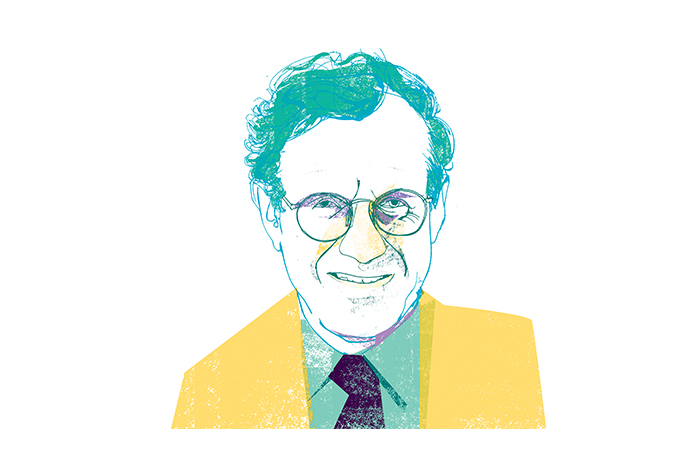
Rosner, who directed Argonne National Laboratory (a descendent of the Met Lab) from 2005 to 2009 and cochairs the Bulletin of the Atomic Scientists board that sets the Doomsday Clock, was a natural choice to deliver the Aims of Education lecture this anniversary year. He took as his subject December 2, 1942, and all that rippled out from it. From the Rockefeller Chapel pulpit Rosner spoke to the Class of 2021 about the experiment’s scientific and broader legacies, both “the good and bad that flowed from the portentous moment” when Fermi declared the reaction had achieved self-sustainment.
For many of the physicists involved, Rosner noted, the sense of achievement was mingled with foreboding and followed by efforts to inform the public and government of the technology’s dangers. Signers of the “amazingly prescient” Franck Report volunteered their advice unsolicited, Rosner emphasized. Scholars must speak truth to power, and be accountable for the consequences of their research.
When Rosner arrived in Chicago 30 years ago, the University’s nuclear heritage was not lost on him. “I think it’s fair to say that [CP-1] is the most important experiment that was ever done here, at the University, in the city of Chicago, in the state of Illinois, in the Midwest,” he says. “It’s singular in terms of its impact on human life on this earth.”
Much of his work is inextricably linked to that experiment. Rosner established the Flash Center for Computational Science, whose simulation codes for modeling supernovae mirror the challenges of the US Department of Energy’s science- and simulation-based efforts to determine the reliability of the nation’s nuclear weapons stockpile without randomly testing weapons: Much like their ground-based colleagues from the Department of Energy, astrophysicists cannot blow up their objects of study.
The work persuaded Rosner of the usefulness of the unratified test ban treaty. For the United States, the Soviet Union, and the other declared and undeclared weapons states to stop testing, he says, “really sharply reduced the ability” of countries that wanted to start nuclear weapons programs.
His work on Flash and as Argonne lab director fueled an ongoing interest in public policy, especially around nuclear nonproliferation and renewable energy. Thus his ongoing service to the Bulletin of the Atomic Scientists, which the University convinced to move its headquarters back to Hyde Park after three years in downtown Chicago. An independent entity, it now has its offices in the University of Chicago Harris School of Public Policy. Rosner likens the Bulletin to a canary in the mine, a forum for experts to debate whether a given conflict or development should give the wider world pause.
For someone who so intimately understands the dangers that nuclear weapons pose, this is a tenuous political moment. It’s not so much the nuclear powers’ stockpiles that keep Rosner up at night. Rather, it’s the possibility of suicidal nonstate actors getting their hands on those arsenals, and the threat of tactical nuclear weapons—“the threshold for using them is potentially much lower,” he says. “And the distinction between strategic and tactical, in countries like India and Pakistan, is almost vanishingly small.”
One of the two founding directors of the Energy Policy Institute at the University of Chicago, Rosner also ponders the potential for clean energy through nuclear technology. He finds the science feasible but the problem of nuclear waste unresolved and, for understandable reasons, the political will lacking. “You may want to think that as a scientist, whatever you do is really just a world unto its own,” he says. “But the fact of the matter is we live in an environment where what we do and say matters and has consequences.”—Adam Doster
Joseph Masco
The anthropologist
As a graduate student in the early 1990s, UChicago anthropology professor Joseph Masco went to New Mexico to study the legacy of CP-1 and the Manhattan Project at the end of the Cold War. The effort to create a nuclear bomb, he discovered, can be found in technological, scientific, and industrial infrastructures; in traces of radiation found in human bodies; and in individual psyches and the very idea of the nation.
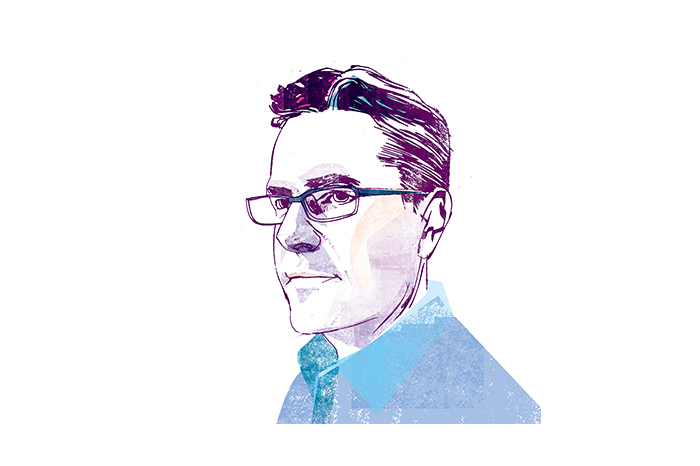
“Nuclear politics,” Masco says, “involves not just the technologies, but also the ideologies, imaginaries, and the affects that support them.” Among these are American exceptionalism and emotions like fear, pride, and shame. The idea of the bomb “distills across these areas, because it both holds the promise of ultimate protection to the nation-state and is the ultimate danger.”
Using the nuclear bomb as a lens through which to examine US nation building and culture since the mid-20th century, Masco looks at its broad effects on society and its effects on government in particular. Those include the post–World War II transformation of the Department of War to the Department of Defense and the formation, a decade later, of the Defense Advanced Research Projects Agency, or DARPA, which Masco describes as a commitment to “unending Manhattan Projects on behalf of the United States.”
“These are huge structural changes in the concept of what security is,” Masco says, “and at the center of all of these programs and desires and fears is the atomic bomb.”
Masco’s books, The Nuclear Borderlands: The Manhattan Project in Post–Cold War New Mexico (Princeton University Press, 2006) and especially The Theater of Operations: National Security Affect from the Cold War to the War on Terror (Duke University Press, 2014), elucidate how Cold War ideologies, beginning with the bomb, were repurposed for the ongoing war on terror.
The lurking fear of nuclear Armageddon that arose after World War II, Masco says, helped usher in an era of constant imagined threats to the nation and its people—threats from which only the government could offer protection.
At the same time, the Manhattan Project introduced new levels of secrecy into military protocol. While there have always been military secrets, Masco says, the idea of maintaining a population of nearly five million people with security clearances and generating a significant portion of knowledge that is never shared widely and has vast consequences beyond the military, was a development of the nuclear age. This compartmentalized secrecy “creates the image of a state that always knows more than it’s telling.”
In the current environment, government officials, themselves shrouded in secrecy, act on “threat-based reasoning.” Instead of responding to risk—an evaluation of known and quantifiable factors—Masco argues, the government says that it and its citizens must be vigilant against a terrorist threat that’s “purely in the imaginary,” often focused on worst-case-scenario game exercises. “The whole idea of the worst-case scenario in a threat-based world,” Masco says, “is that the danger hasn’t happened yet.”
Masco often encounters people who are inclined to put the politics of nuclear weapons in the past—threats from and against North Korea notwithstanding. But as the United States spends billions of dollars on modernizing its nuclear arsenal, Masco says, “we’re at an unusually dangerous moment historically, precisely because nuclear politics are playing out without much public attention.”
A more beneficial legacy of CP-1, for him, is the foundational linkage between science, universities, and the state. These institutional relations figure in his research on the closely linked science behind climate crisis and nuclear crisis: the modern notion of ecology, which grew out of efforts in the 1950s to study nuclear fallout, also led to understandings of complex systems and ultimately climate change. Today many geologists believe the mid-20th century ushered in a new geological era—the Anthropocene—and date it from the presence of plutonium in the atmosphere from nuclear testing. In other words, the CP-1 experiment was “the start of a transformation of science and geopolitics but also led to an indelible mark in the earth system—the nuclear age has entered into geological time.”—Jeanie Chung
